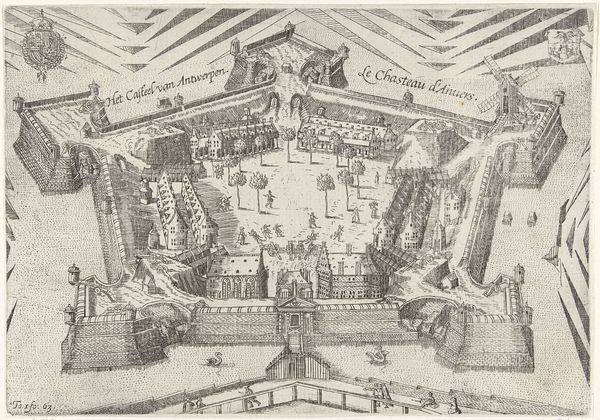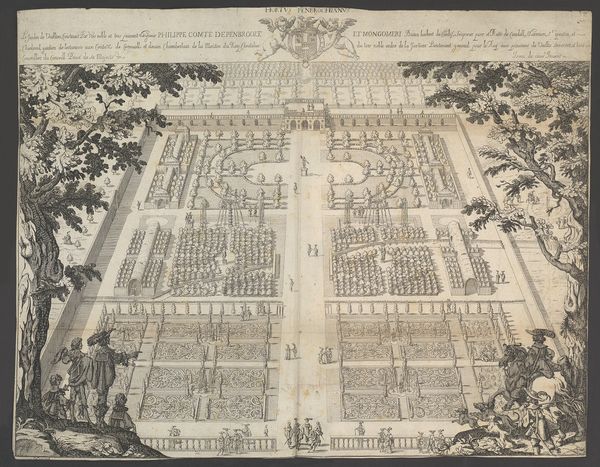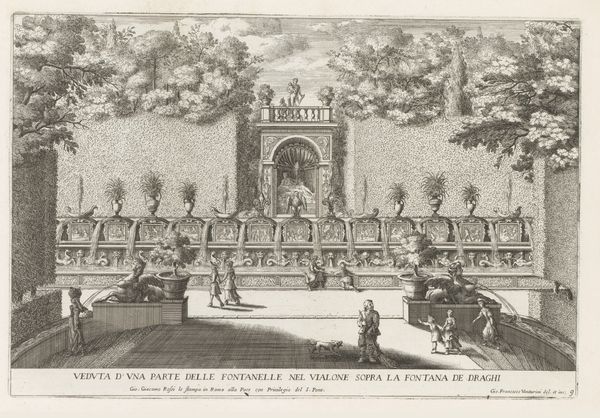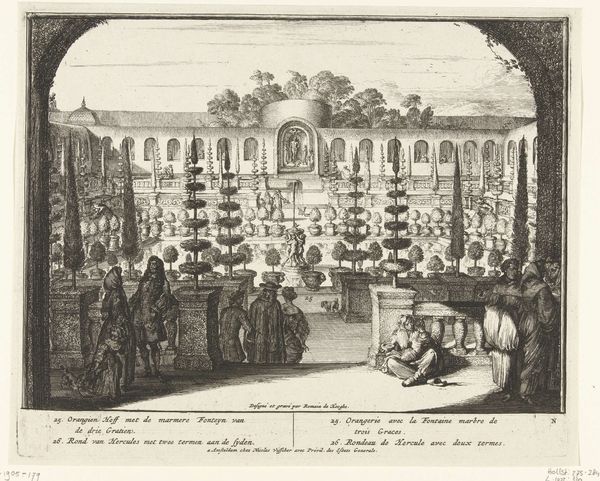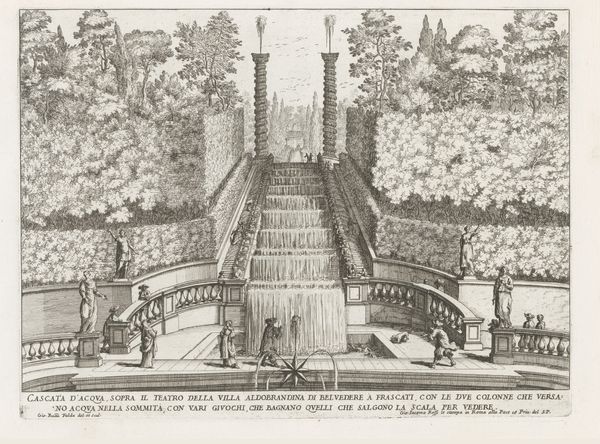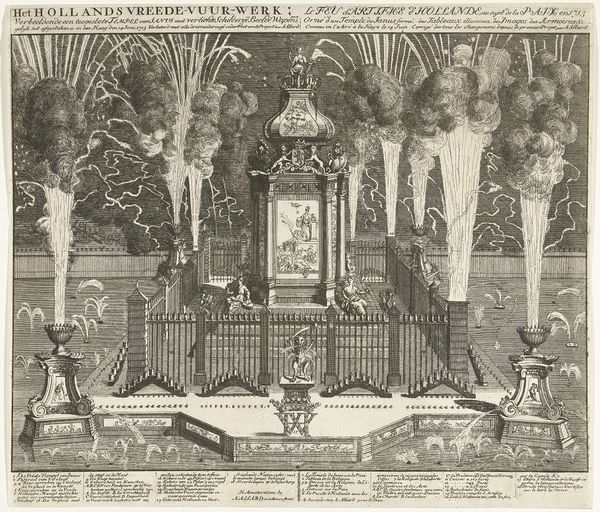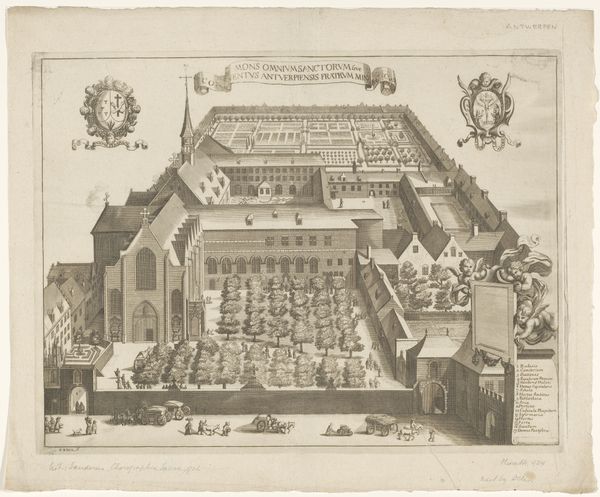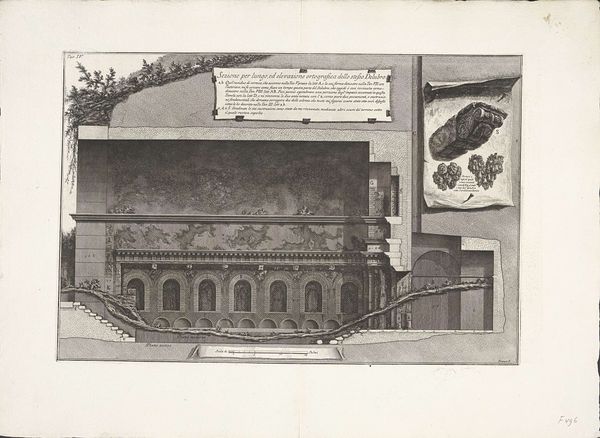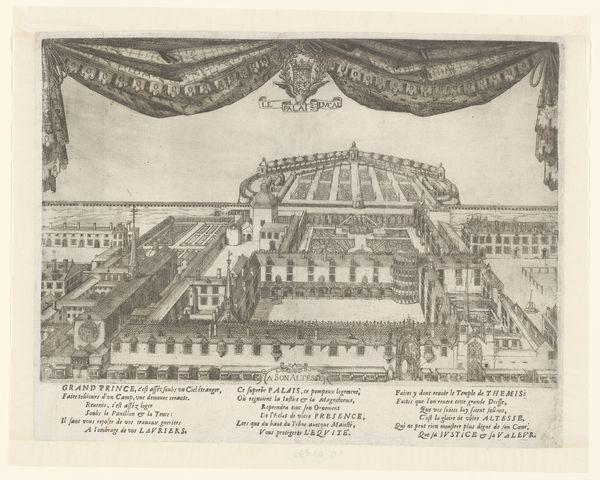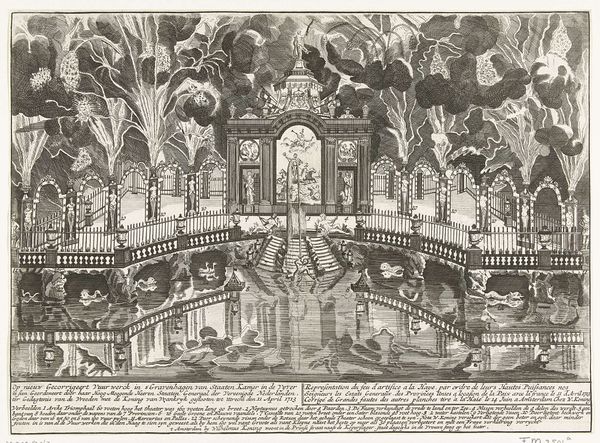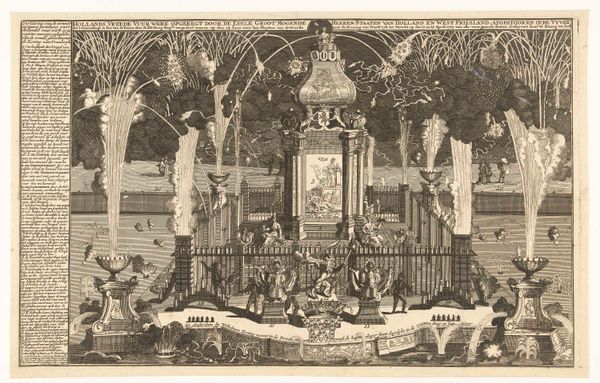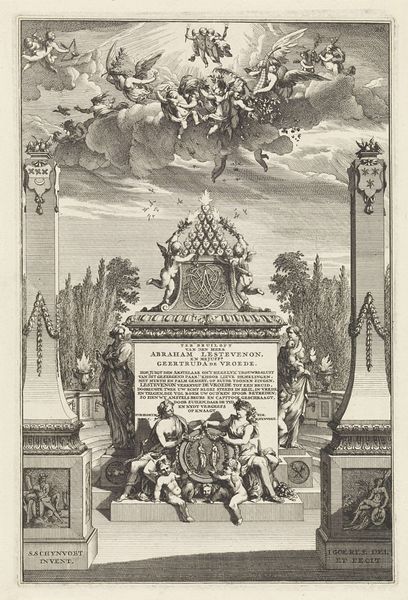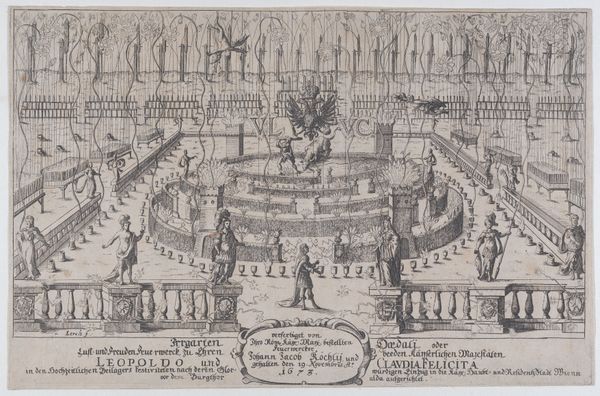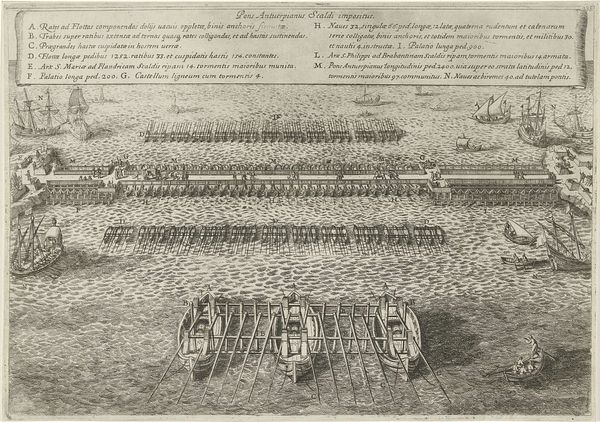
drawing, print, ink, engraving
#
drawing
#
dutch-golden-age
# print
#
landscape
#
11_renaissance
#
ink
#
cityscape
#
academic-art
#
engraving
Dimensions: height 328 mm, width 404 mm
Copyright: Rijks Museum: Open Domain
Curator: Here we have Willem van Swanenburg’s “Hortus Botanicus van de Universiteit Leiden,” created around 1610. This captivating work, currently housed in the Rijksmuseum, is rendered in ink through engraving. Editor: It's so intricate! The garden's neat rows contrast starkly with the strange menagerie depicted at the bottom—it all feels symbolic, yet… clinical? Curator: It is precisely that intersection I find fascinating. The garden itself, meticulously rendered, symbolizes the burgeoning scientific spirit of the time, the desire to classify and understand the natural world through the emerging science of botany. Editor: Look at the perspective though. It's so rigidly structured, everything receding to a vanishing point somewhere in that formidable building. Does that linearity amplify the feeling of control over nature? Curator: Undeniably. The garden isn’t merely a collection of plants; it's a carefully ordered microcosm reflecting the intellectual ambition of Leiden University. The formal layout, divided into neat beds, speaks to a rational approach to knowledge. Then, below the garden, we find depictions of exotic animals. The labels written alongside them offer something like a key or… moral. Editor: And that crocodile is anything but realistically drawn. Its scaly texture is painstakingly rendered, but the proportions feel off, almost cartoonish. The contrast makes me think about the shift from direct observation to scientific classification – perhaps emphasizing accuracy through symbolism rather than strict representation? Curator: I agree. The artist utilizes imagery that communicates far more than realistic appearance. Even the orientation points labeled to each side – "Oriens" and "Septen[triones]" – place the garden within a symbolic, cosmological framework. Knowledge and dominion over nature weren't simply scientific pursuits; they possessed cultural weight. Editor: That juxtaposition, then, amplifies a human impulse to dominate nature's chaotic forces, bringing order not just to the garden, but to understanding the world. What I initially perceived as clinical now feels like… aspiration. Curator: Precisely. By integrating precise detail with symbolic meaning, the artwork transcends a simple depiction and becomes a mirror reflecting a pivotal moment in intellectual history. Editor: A fascinating demonstration of how order and curiosity shaped an era, meticulously etched in ink.
Comments
No comments
Be the first to comment and join the conversation on the ultimate creative platform.
